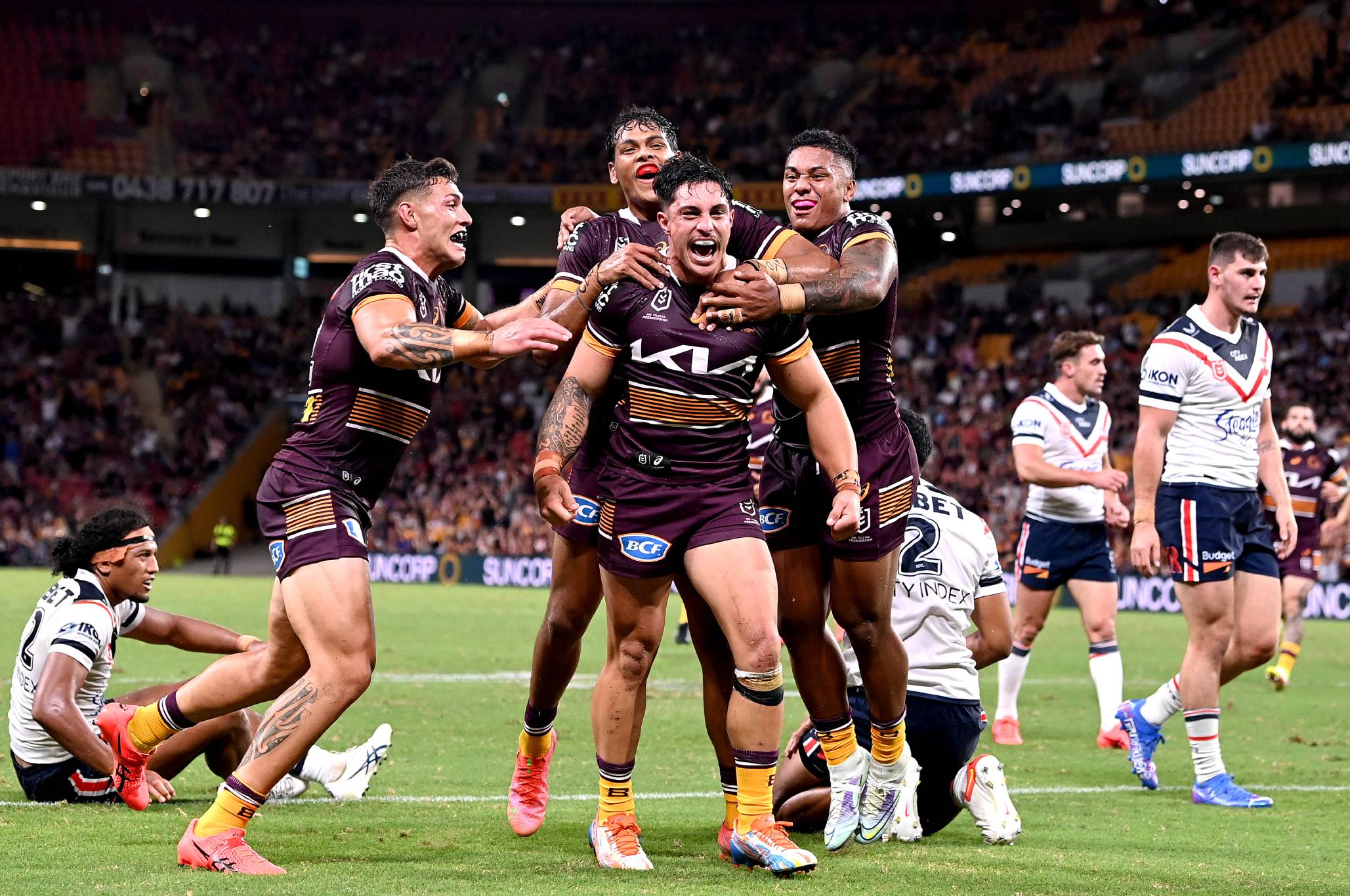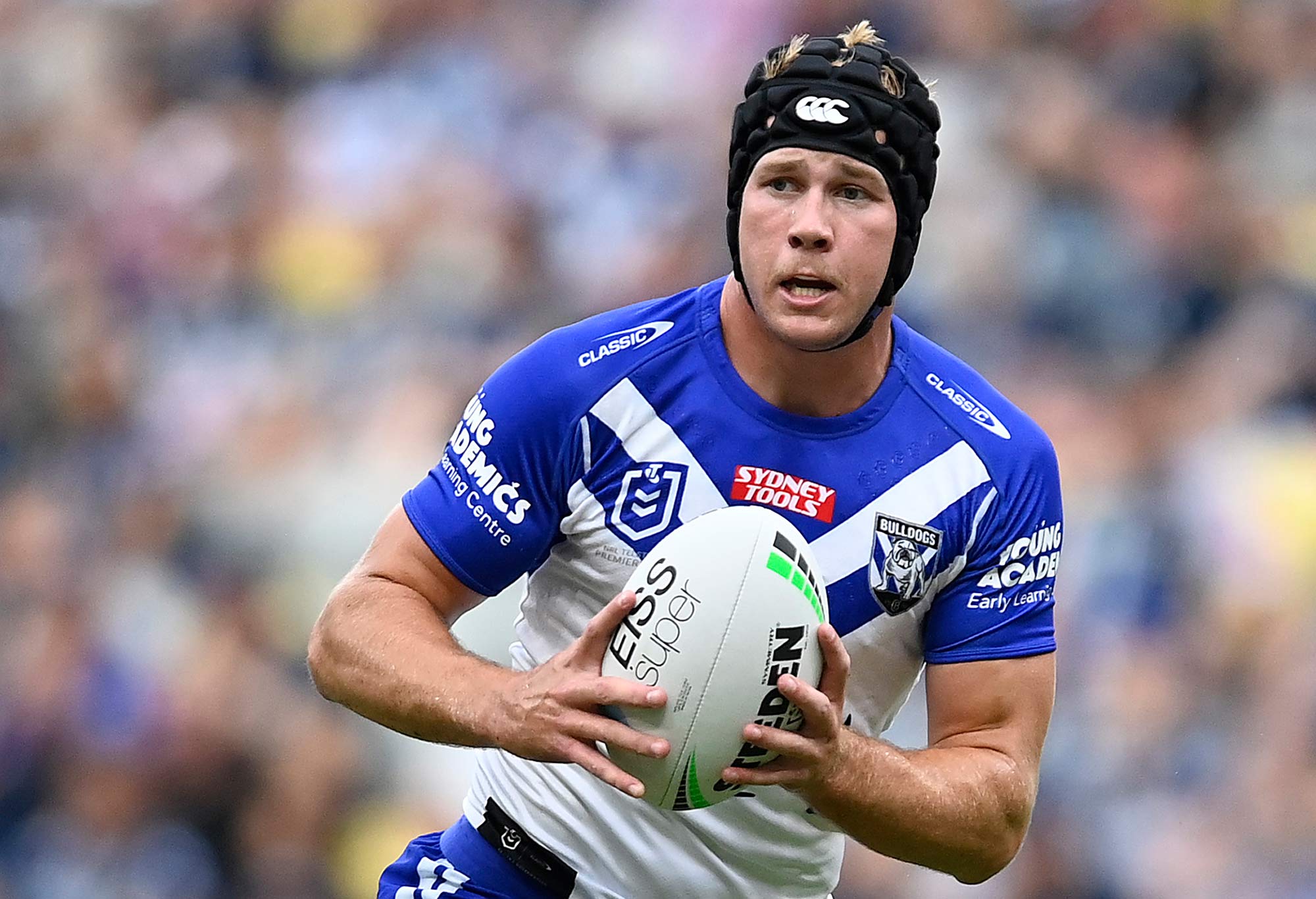As the great philosopher Homer (Simpson) said, however: “You can come up with stats to prove anything. Forfty per cent of people know that, (Paul) Kent.”
There’s few things that wind me up more than the poor use of statistics in rugby league, particularly when a stat is presented as a good/bad thing without context.
Missed tackles, as anyone who has read this column will know, are a particular bugbear of mine, because they are probably the most misused stat in the game.
It’s quite a simple mental link to say missing tackles=bad, because making tackles=good, but using it to illustrate whether someone has defended well without the context of what they were trying to do is the peak of pointless.
If you’d like 1000 words on that, I went deep into it about Dane Gagai essentially deliberately missing tackles in Origin 1, but the short answer is that lots of teams defend out-to-in and want to force the attack back towards their middles, so missed tackles is completely useless.
Regular readers will also know that I loathe completion rates, because there’s almost no correlation between finishing sets and scoring points, which is, after all, what you should be trying to do.
In fact, the double-premiership-winning Roosters (plus about a decade of St Helens in the Super League) suggest the opposite correlation.
This rant is going somewhere, I promise.
Last week, we went into positions and roles – again, short answer: where someone stands is not always related to what they do – with a lot of data to back up who was doing what.
It got me thinking: who are the outliers? These are the unicorns, the players who are really good at one specific thing, or stand out because of their tactical utility in a way that nobody else can cope with.
Think of it like the Manute Bol problem: how do you train for a 2.31m basketball player when there only is one?
Or Axar Patel, the Indian left-arm spinner with a Test average of 11 because nobody can work out how he doesn’t really spin the ball at all?
Go on then, another: what do you do about Shohei Ohtani, both a power hitter and a fearsome pitcher, essentially giving his team an extra player?

Axar Patel of India. (Photo by Pankaj Nangia/Getty Images)
Rugby league doesn’t really have a true example of this, but there are plenty of statistical unicorns out there.
Indeed, there’s enough for a whole team of them, and with a full season’s worth of sample size to fall back on, I thought it would be fun to pick a 17 of the most statistically and tactically interesting players in the comp.
These are the freaks, the guys who are incredibly good at one thing or who stand out in one category that makes them totally unlike other players. And we shall bring them all together to form a frankenteam that will destroy all comers, or at least, beat the Wests Tigers to 15th place.
A few ground rules: this is Coach Wood, so we’re going to be playing a high-yardage, pressure game based around winning the transitions and finishing our sets. We win games 6-0. If it was good enough for Australia in a World Cup final, it’s good enough for us.
Think of this 17 as a tribute to one of the most tactically interesting teams of recent years, my beloved Hull FC of 2016/17. We play tough, we kick well and we grind our way to wins.
Here they are, your 2023 Unicorns, the newest addition to the NRL.
Fullback
Anyone who read the opus on positions knows that fullbacks are all things to all men. We don’t need a finisher, or a creator, or a metre eater here, however: we need consistency. No mistakes, solid set starts and reliability are our watchwords.
That’s why we have Nick Meaney at the back. He’s made 8 errors off 469 possessions this year, or roughly one per 59 touches, making him about the least error-prone player in the NRL, especially when you factor in that he plays across the backline. Oh, and he’s kicking our goals too.
Wingers
It’s set starts that we want, and there’s two players who stand well above the rest in that regard.
Greg Marzhew can’t really tackle, isn’t much cop under a kick and doesn’t score that much for a winger, but if you want someone to truck it in hard, he’s your man. Marzhew is right up there for one-person hit ups – perfect for when Meaney has caught a kick and took his tackle – and top of the NRL for tackle breaks among wingers.
On the other side, we’ll have one of our true statistical unicorns: Jacob Kiraz. The Lebanese King is an offload machine, second in the comp despite, y’know, being a winger. Second phase specialists can turn a regular set into a seven-tackle one, and there’s none better at it than Kiraz.
Both Marzhew and Kiraz also rank really highly for total runs, so you know they’ll do their doggies and get us up the park.

(Photo by Bradley Kanaris/Getty Images)
Centres
What’s the opposite of the missed tackles problem? Well, it might be Kotoni Staggs.
I am picking him to labour a point, but one of the key things you might want in a centre is the ability to protect both a half and a winger defensively by making a lot of tackles. Well, Staggs is top, by a distance, for one-man tackles, essentially holding up an edge on his own.
Our other edge will see Tolutau Koula, because – as every soccer commentator knows – you can’t teach pace. We’re going to need to finish our chances and boy, having the junior carnival sprint champion/son of Tongan Olympians is surely going to help.
There’s no stat to back this up, of course, but y’know. Eyes. Have you seen him? Catches pigeons, that lad.
Five-eighth
There’s also no real statistical reasoning behind Matt Burton, our five-eighth, but come on: did you think I was ever going to pick a team of ragtag weirdos without the guy with the uncatchable kick?
We will force many errors, confounding non-Nick Meaney fullbacks the world over, through the spiralling torpedoes of Burton’s megaboot.
There is a stat of Long Kicks to Space, and Burton is pretty good at it – 5th in the NRL – but come on: numbers ain’t it. Look how high it went!
Halfback
We love a repeat set here at the Unicorns, and there’s nobody better at forcing dropouts than Toby Sexton.
He might not offer much by way of attacking value with ball in hand, but Sexton takes more attacking kicks and forced more repeats than anyone else going, which is all the more amazing when you average for possession, as he plays in a team that doesn’t have that much ball. Imagine if they did: it’d be a dropoutathon.
Front-rowers
Our front-rowers are all about agility and workrate, not size, because we shall be operating a very specific interchange policy, more on which later.
The Unicorns will be starting with Blake Lawrie, the NRL champ of not getting the ball. Nobody has run more decoys than big Blocker, to the point where you think that his team simply don’t want to give him the footy.
It’s not even close, too: Lawrie averages two games’ worth of extra decoy runs than the next best. Probably for good reason: he also has, by far, the most ineffective hit ups, with two games’ worth of runs for fewer than 8m more than anyone else.
Our second pattern holder will be Joe Ofahengaue, and he’ll get the jersey for his ability to do exactly the same things as Lawrie, but not quite as much. He’s an expert non-ball-carrier, a master ineffective runner, a non-breaker of tackles and yet a total workhorse.
If you want two props to do a lot of nothing, then get Blocker and Offa in.

Matt Burton. (Photo by Ian Hitchcock/Getty Images)
Hooker
You might, quite reasonably, be asking how this side is ever going to score a try. We’ve taken five hit ups, forced a repeat set and then taken another five hit ups. We are the 2021 Canterbury Bulldogs.
Well, we love a pushover try, and if it’s the ability to burrow in that you need, then you’ll be wanting Fa’amanu Brown. Brown is the Pippo Inzaghi of rugby league, lethal from a yard out, with five tries in 11 appearances – or, if you prefer, a try every 105 minutes of footy.
Given that he’s managed to score five times from just 25 dummy half darts, you’d think teams would wise up – but they appear not to. Long may it continue.
Back rowers
Our next stellar attacking tactic is going to be using the incredible kick-catching abilities of our back-rowers. We already have the game’s premier short-only kicker in Sexton, so let’s add Jeremiah Nanai, a master of touching down grubbers, and Shaun Lane, the tallest back-rower in the comp.
Nanai has 17 tries this year, plenty of them from kicks, and Lane is both an effective batter-downer – just ask Clint Gutherson – and a creative wizard, with the most try assists of any second row. We’re going to play second phase, we’re going to get into position and we’re going to batter that door in.
Lock
Oh, it’s second phase you want? Tevita Pangai jnr has to be in there. It’s quite ludicrous how much better he is at offloading than everyone else.
TPJ has managed 49 in 18 games, with the next best being Viliame Kikau on 38 – and he’s played three games more. If you pro rata offloads out, Pangai jnr is five games better than anyone else in the NRL and manages an offload on every fourth carry. It’s bonkers.

(Photo by Mark Metcalfe/Getty Images)
Interchanges
We’re going to have some fun on our bench, that’s for sure. Our middle rotation is all about impact, and given that we’ve gone for the steadiest of Eddies in our starting pair, we have to get the most unhinged players possible coming on to get involved.
That means Davvy Moale and Spencer Leniu, the most heads-down-bums-up of front-rowers, who have combined for a grand total of five passes in the entire season. Moale has just one, which is spectacular in its own way.
We want our guys to come on, run it straight and do absolutely nothing else. In terms of runs per minute, you’ll do a lot worse than those two. After 25 minutes of Blake Lawrie pretending to take hit ups – boom: Spencer ‘not a backwards step’ Leniu.
Next in the impact category will be Siliva Havili, the ultimate in forward utility. He’s good for nine runs per game, yet somehow plays as a hooker, prop, lock and general wrecking ball. He also has an incredibly low centre of gravity, enabling huge offload numbers for a guy that plays low minutes.
We’ve got our heavy forward rotation covered, so who is our back? Well, we need someone who does a bit of everything, so let me suggest Jack Welsby.
You might not have heard of him, as he plays in the Super League for St Helens, but in just shy of a 80 appearances, he’s played 35% as a fullback, 20% as a centre, 20% in the halves, 10% as a winger and the rest off the bench. It’s hard to think of anyone more diverse than young Jack. He’ll be in England’s World Cup squad and he rounds out the Unicorns.
